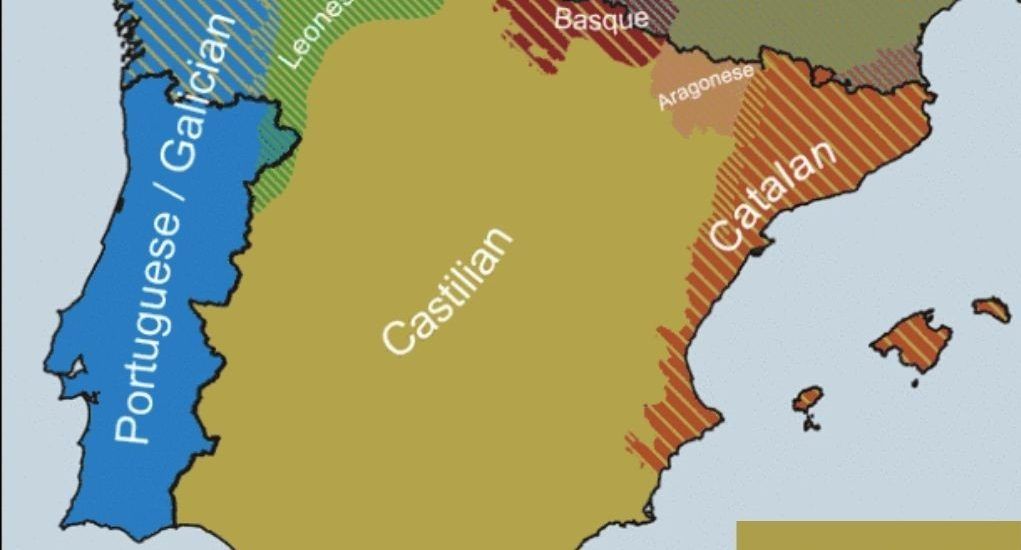Castilian (or Castellano) is an → Ibero-Romance dialect, originating in north-central parts of the Iberian peninsula (Castilla Vieja or Old Castile), on the basis of which developped the Standard → Spanish language. For this reason the terms Castilian and Spanish are often used interchangeably or with political overtones. The standard language, however, evolved in a rather specific way and since the 15th century its users in Central Spain (Castilla La Nueva or New Castile) were yet inclined to regard the speech of Old Castile as rustic and archaic.
Castilian arose in the 9th century, when the Basques living in the Cantabrian mountains moved down to occupy the upper river Ebro valley and mixed there with the local Romance population. They adopted its language, marking it by some Basque phonological features and vocables. The region then was part of the boundary belt with the Muslims (Moors) and in order to have a firm hold of it the Christians were building a lot of castles there–from where the name Castile, meaning “land of castles”, was derived. In the late 10th century Castile was politically consolidated as a county with its capital at Burgos. In 1037 it was proclaimed an independent kingdom and it played a decisive role in the Reconquest.
As the kingdom of Castile expanded, the Castilian language spread over Spain. In the late 15th century it became the official language of the unified Kingdom of Spain. The end of the Reconquest and the discovery of America in 1492 were matched linguistically by the appearance of → Antonio de Nebrija’s Gramática de la lengua Castellana (“Grammar of the Castilian Language”), which postulated the need for an ennobled language fit for imperial exportation. Distributed widely in Spain and the colonies, this Grammar entrenched the dominating position of Castilian and in 1526 Charles V referred to it as Spanish language, so that since this time both terms, Castilian and Spanish, were used as synonymous.
In this context Castilian gradually replaced most of the other Romance languages in the Kingdom and developped local varieties (→ dialects), in which elements of those languages were retained as a substratum. In relation to this it is important to distinguish the Leonese-Castilian dialect from the → Astur-Leonese language, the Castilian of Aragon from the → Aragonese language…


